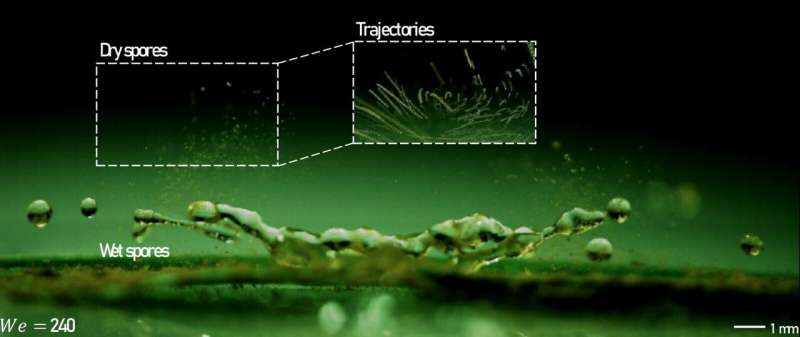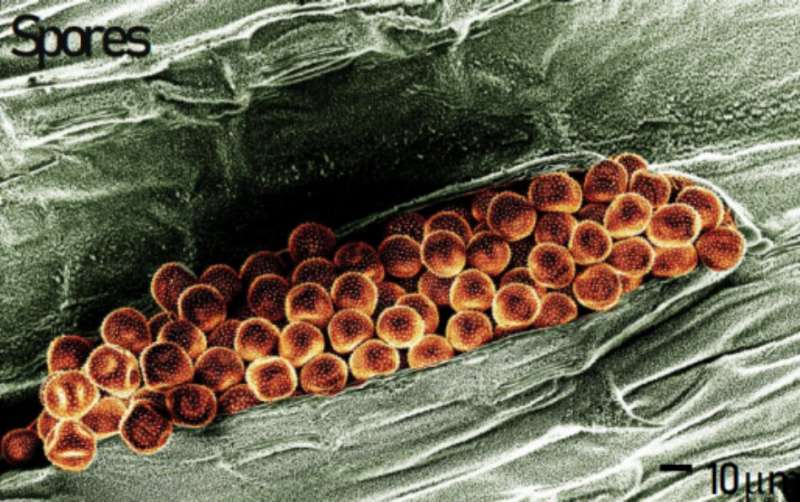Mini-tornadoes of spores illuminated during raindrop impact

Plant diseases are a significant threat to our food security. Rain provides fresh water to our crops, but splashing drops may also contribute to the spread of plant disease. Raindrop impact is known to be a mechanism for dispersing microscopic spores of pathogens, which infect staple crops and devastate crop yields.
Recent research in the Schmale Lab at Virginia Tech and the Jung Lab at Cornell University has illuminated how the splashing of rain droplets can transport spores of pathogens from infected plants. The team used high-speed video cameras to observe microscopic tornadoes of rust spores generated from the impact of raindrops on infected wheat leaves. Their findings, which were recently published in the Proceedings of the National Academy of Sciences (PNAS), have implications for preventing disease spread in wheat crops.
"Previous studies only focused on wet-dispersed spores following raindrop impact. We are the first to demonstrate tornado-like air vortices that result from raindrop impact. These microscopic tornadoes may help transport plant pathogens over long distances," said David G. Schmale III, Professor in the School of Plant and Environmental Sciences in the College of Agriculture and Life Sciences, and affiliated faculty member of the Fralin Life Science Institute.
The researchers set up experiments using a high-speed video camera to capture images of raindrops impacting wheat plants infected with the rust fungus, Puccinia triticina. These experiments shed new light on the physics of spore dispersal during rainfall.
"Interdisciplinary research is needed to bridge plant pathology and ?uid mechanics to study the mechanics of plant pathogen dispersal," said Hope Gruszewski, a Laboratory Specialist Sr. in the Schmale Lab, and a co-author on the paper.
This previously unknown method of air-vortex dispersal is a swirling mechanism that can be likened to a mini-tornado of air that carries the plant pathogens off the plant and onto air currents, with the potential for transport over much longer distances.
"Our lab specializes in high-speed imaging and fluid mechanics. We used a high-speed video camera to visualize rust spores being liberated from an infected wheat leaf. We observed thousands of spores being transported in air vortices following raindrop impact. That was quite surprising," said Sunghwan Jung, professor in the Department of Biological and Environmental Engineering at Cornell University.

The air-vortex dispersal mechanism could explain abrupt increases in spores in the atmosphere immediately after major rainfall events. Understanding the spread of plant pathogens during rainfall could help farmers better manage the timing of fungicide applications to their crops.
"Our research has the potential to provide new strategies for minimizing disease spread in wheat, which could help us meet future wheat yield demands," said Hyunggon Park, a Ph.D. student in the Biological Transport program (BIOTRANS) at Virginia Tech, co-advised by David Schmale, and a co-author on the paper.
More information: Seungho Kim el al., "Vortex-induced dispersal of a plant pathogen by raindrop impact," PNAS (2019). www.pnas.org/cgi/doi/10.1073/pnas.1820318116
Journal information: Proceedings of the National Academy of Sciences
Provided by Virginia Tech




















